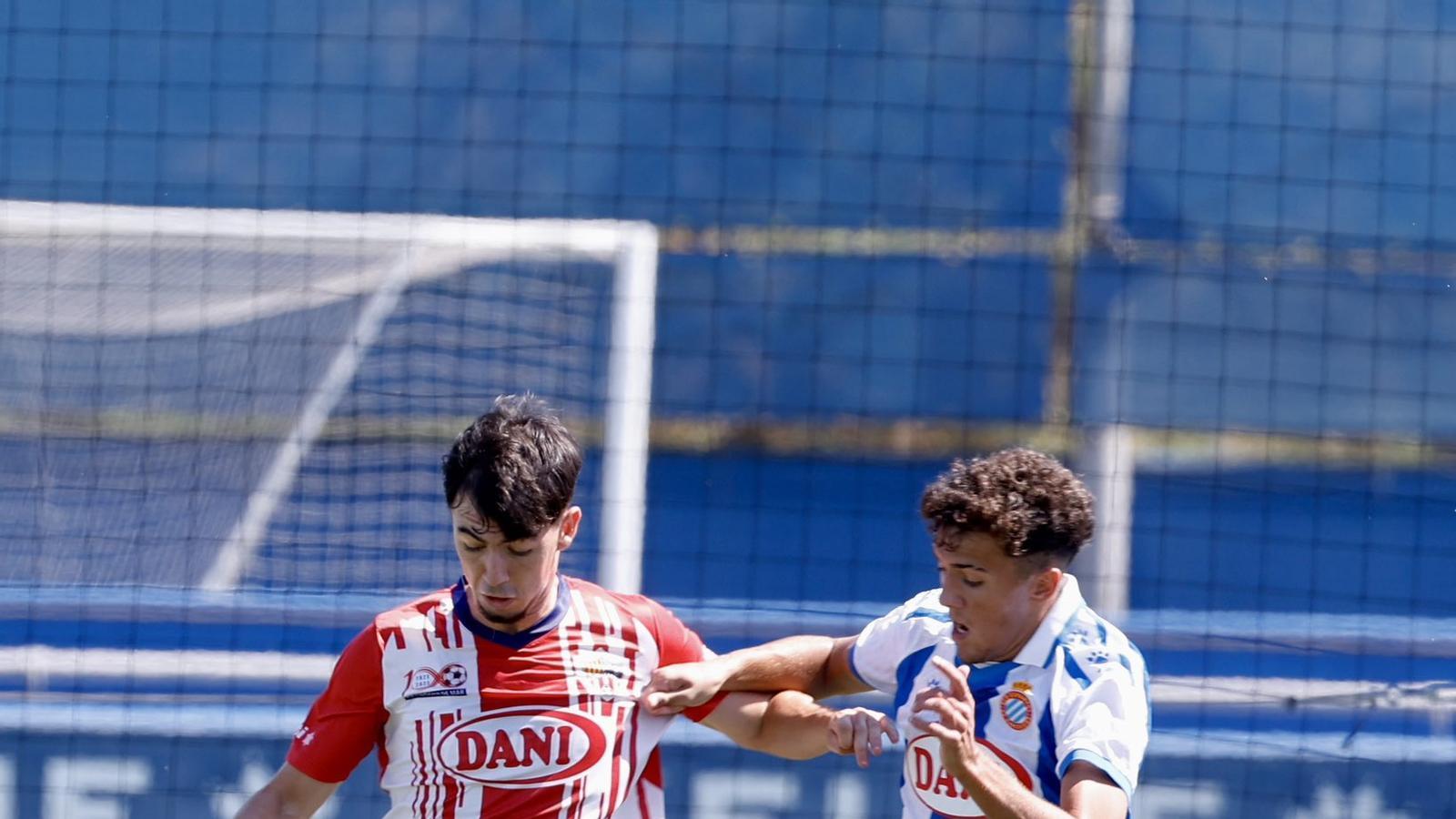The unknown Espanyol team that doesn't bear its name and plays in Maresme
Vilassar de Mar, which competes in the Third RFEF, has affiliated with the perico club


BarcelonaFran Garagarza had long considered the idea of creating a second Espanyol reserve team, introducing an Espanyol C into the blue and white structure. After exploring various possibilities, in early 2025 he contacted Vilassar de Mar, a historic club from Maresme with over a century of history that competed in the Third Division RFEF. The threat of relegation from the Elite League cooled negotiations, but despite the confirmation of the relegation, talks resumed in June, concluding with an agreement whereby Vilassar would become Espanyol's second reserve team.
However, they compete at the Xevi Ramon municipal stadium in the fishing village (most training sessions are in Sant Adrià), maintain the historic name UE Vilassar, and wear the traditional red and white colors. It is an affiliation model that preserves the identity of the Maresme club, similar to that of Nàstic with Pobla de Mafumet or to that which Espanyol itself committed to in the nineties with L'Hospitalet or Cristinenc, which acted as a subsidiary before the birth of Espanyol B.
What Espanyol and Vilassar do share is the main sponsor: Conservas Dani. Sánchez Book, a businessman from Vilassar and former president of the blue and white party, has had a lot of influence in this alliance, which started with "great news": the administrative relegation of Som Maresme, confirmed on August 20, caused Vilassar to regain the status it had lost on the pitch in the offices. "Having an Espanyol C team in the Third RFEF is essential for the growth and protection of our homegrown players," Garagarza said in a press conference, also explaining the difficulties in putting together a squad that was originally planned to play in the regional league: "Many players didn't want to come to the Elite. Now there's a queue."
Why does Espanyol want a second reserve team?
"What can he bring us? Maturity, competitive demands, the possibility of shortening deadlines, and what I call the other competition. We want the kids in their final year of youth training to already be competing at Vilassar, instead of competing in the youth league, where only five or six games per season are truly competitive." A project overseen by Ander Garitano, a former professional player and right-hand man in the blue and white team's technical secretariat at the Mutriku club. He recommended the signing of Manolo González for Espanyol B when the club already had an agreement with Ferran Costa.
With an average squad age of 18, all of Vilassar's players were born between 2005 and 2007. The coach is Dani Pérez, a manager who, despite his youth, has extensive experience in youth football at Cornellà and Espanyol, where he managed both the 'A' and 'Espanyol' last season. remains in the Second RFEF, Vilassar cannot go up - but rather develop talent for the first team, where 51% of the players are already Catalan or youth players; this figure is a consequence of a strategic plan which promotes the commitment to local footballers through agreements with clubs in Catalonia.
"There are more than two or three clubs in La Liga today that have players in the first team who three years ago were in the C team," explains the Basque sporting director of a practice that is becoming increasingly common in Spanish professional football: Real Madrid, Villarreal, Betis, Sevilla, and Atlético de Madrid all have two reserve teams. Until 2007, there was also the FC Barcelona C team, where, among others, a certain Leo Messi cut his teeth. At 16, the Argentine star shone against teams such as Banyoles, Gramanet B, and Palafrugell in the Third Division. It's the same category in which Gerard Moreno, the idol of Espanyol, scored goals for Villarreal C, and where, last Sunday at the Europa B stadium, the affiliation between Vilassar and Espanyol officially began, ushering in a new era in the Blanquiazul youth system.
